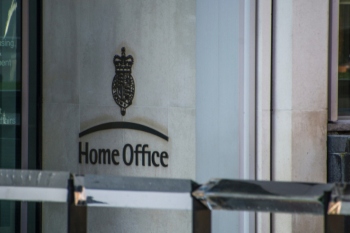Patients could get home to family and off busy wards more quickly, thanks to AI that could help write the documents that are needed to discharge people from hospital. The technology will help cut waiting lists, by giving frontline staff the precious gift of time and making care more efficient so that loved ones return to the comfort of their homes quickly.
The AI-assisted tool could help doctors to draft discharge documents faster by extracting key details from medical records, such as diagnoses and test results, using a large language model. After a full review from a medical expert responsible for the patient, these documents are then used to discharge a patient from a ward and refer them to other care services that may be needed.
Currently being developed at Chelsea and Westminster NHS Trust, it is one of many projects to receive backing from the Prime Minister as part of the AI Exemplars programme. Over the coming months, these exemplars will be developed and trialled, with those showing the most promise potentially rolled out more widely.
Speaking on a visit to Chelsea and Westminster Hospital, technology secretary Peter Kyle, said: ‘These AI Exemplars show the best ways in which we're using tech to build a smarter, more efficient state.
‘When we get this right across government, we're talking about unlocking £45bn in productivity gains – delivering our Plan for Change and investing in growth not bureaucracy.'
Health and social care secretary, Wes Streeting, said: ‘This potentially transformational discharge tool is a prime example of how we're shifting from analogue to digital as part of our 10 Year Health Plan.
‘We're using cutting-edge technology to build an NHS fit for the future and tackle the hospital backlogs that have left too many people waiting too long.
‘Doctors will spend less time on paperwork and more time with patients, getting people home to their families faster and freeing up beds for those who need them most.'
The NHS Federated Data Platform, a system designed to connect IT across health and care services, is hosting the AI-assisted discharge summaries tool. This means that it can handover information to different care services efficiently and securely, while also making it easier to use the technology across the country if tests are successful.
Reaction
Matthew Taylor, chief executive at the NHS Confederation, said: ‘We welcome this announcement which shows how AI can boost efficiency and help NHS staff discharge patients quickly. When rolled out effectively, AI has great potential to improve NHS productivity by helping to reduce waiting lists.
‘It is positive that through this pilot project, the AI-assisted tool will reduce the administrative burden on doctors and capture critical information by helping them draft discharge documents faster.
‘But for AI tools to work well, sufficient time is needed to obtain consent and verify accuracy as the health worker remains responsible for both the precision of the information and patient confidentiality. This will ensure high-quality documents are produced and patient trust is maintained.'
Unison general secretary, Christina McAnea, said: ‘AI is transforming the world of work, with massive potential to improve public services. It can support staff, cut down on drudgery, reduce pressure and allow workers to concentrate on the more demanding aspects of their jobs.
‘That should mean speeding up treatment, freeing up hospital beds and reducing waiting lists. But employers must use these tools responsibly. It cannot be an excuse to cut roles and replace people with tech. Many tasks in the NHS and probation should only be carried by people with the right skills and the correct training.
‘Technology can't provide the essential human touch needed in health, care and many other essential services. AI can't wash, clean or dress anyone. Nor make sensible decisions about complicated care packages needed for each and every individual. The new forms of AI risk entrenching bias, validating inaccuracies and threatening privacy.
‘It's essential workers and unions are involved in the rollout of technology in public services to protect jobs and ensure existing inequalities aren't further reinforced.'



